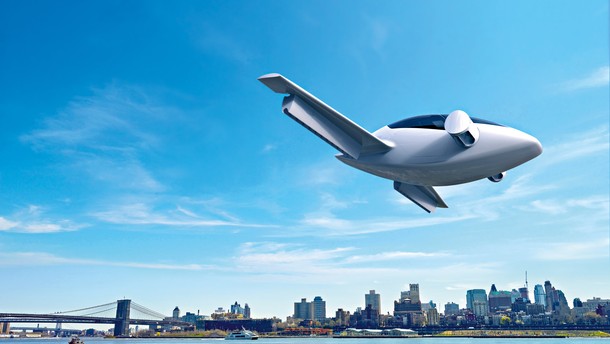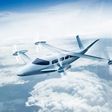
The Lilium Aviation group website is already counting down the seconds until January 2018, when a German team is due to introduce their first compact electric aircraft, called Lilium Jet. Jet, as in real jet? A real jet, though with a signature of its own, a green and eco-friendly touch. This is what they say: Lilium Jet will seat two passengers and cover a distance of up to 500 km, at a speed of up to 400 km/h (with a cruising speed around 300 km/h).
It will revolutionize the daily transport of individuals
Though the team of visionary aeronautical engineers from the Technical University of Munich is still secretive about the project, the first photographs reveal that the jet will be powered by a phalanx of tiny fans, arranged across the front and much longer rear wings. The aircraft will be of an unusual, slightly oval shape, without a tail, which the designers were able to do without, thanks to the propellers mounted on the wings, while still establishing enough lift force and buoyancy, even in the face of restricted aerodynamic surfaces.

The capability of vertical take-off, as well as landing (VTOL), puts Lilium Jet at an advantage, for it allows the aircraft to get airborne from any heliport, if not your home backyard (which will probably not be allowed by law). While taking off and landing will be primarily restricted to airports, the plausibility of other sites sounds at the very least intriguing. Classed as a light sport aircraft, Lilium Jet will require pilots to obtain the LSA (Light Sports Aircraft) license by completing
20 hours of training. The two-seater is designed only for daylight use (with the earliest take-off up to half-an-hour before sunrise, and landing no later than a half-hour after sunset—forget about showing off your night-time landing skills in front of a nightclub). Pilots will have to yield to weather conditions, which have to be good, if not ideal, say the designers (whatever that may mean in practice).
Its humble dimensions will supposedly also be beneficial, in that the aircraft won't be subjected to competing for the slots in take-off and landing schedules that are so necessary for bigger aircraft.

"Our goal is to develop an aircraft for use in everyday life," said the executive director of Lilium, Daniel Wiegand, one of the four graduates of the Technical University of Munich, who launched the Lilium Jet project last year, with a 25 kg prototype, which was one of many extensively tested, attesting to the concept's endurance. In the year to come, the team is scheduled to carry out the first experimental prototype flight carrying people, whereas the first 600 kg aircraft, accepting up to 200 kg in additional weight, is predicted to be available as early as 2018. With an astounding 320 kW (435 hp) power, the fan engines will make vertical take-offs and landings much quieter than in helicopters. The aircraft is designed to be much safer during these stages of flight, which will be run on automatic pilot, thanks to the smart electronic system. The batteries are easy to charge via a domestic outlet. Flying a Lilium Jet will be, therefore, inexpensive, and even though its retail price is still a mystery, it is supposed hit the market at a price much lower than similarly-sized aircrafts. Above all, it will be cheaper to maintain.

As unbelievable as all this may seem, the very fact that the European Space Agency took the project under its wings, recognizing its environmental potential, increases the probability that one day, in the (near) future, Lilium Jet may become yet another viable means of transportation.



